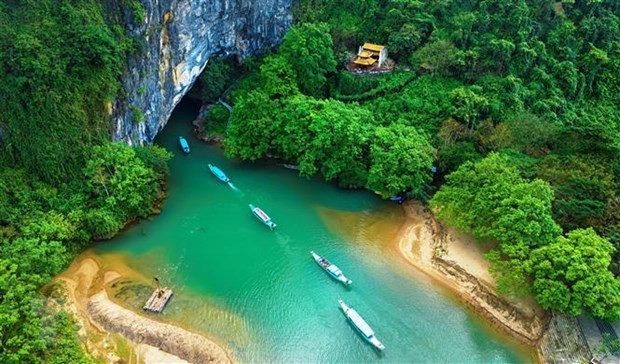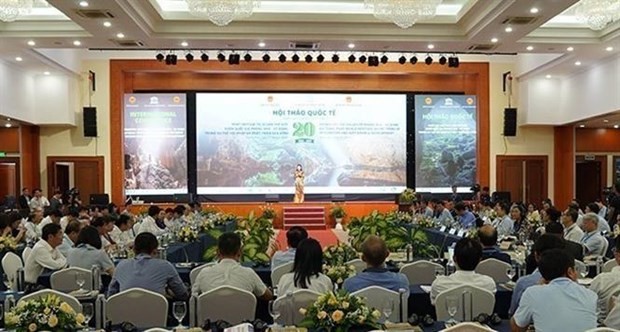 |
The Phong Nha-Ke Bang National Park contains terrestrial and aquatic habitats. (Photo: VNA) |
The event was jointly held by the provincial People’s Committee, the Vietnam National Commission for UNESCO, and the Ministry of Culture, Sports and Tourism as part of activities celebrating the 20th anniversary of the UNSCO’s recognition of the park as a world natural heritage site (July 5, 2003).
The participants also looked into achievements in heritage preservation as well as obstacles to the work.
In his opening remarks, Chairman of the Provincial Party Committee Tran Thang said Quang Binh will do its utmost to preserve and exploit the heritage reasonably, effectively, and sustainably in line with the law, and relevant international conventions.
The locality will also closely coordinate with the management board of the Hin Nam No National Park of Laos, which borders the Phong Nha-Ke Bang National Park, to form a unique tourist site of Southeast Asia and the world as well, he said.
 |
At the symposium (Photo: VNA) |
At the event, Quang Binh called on international organizations, scientists, and researchers to continue to decode the values of the heritage and work out sustainable preservation solutions.
According to UNESCO, the Phong Nha-Ke Bang National Park comprises an area of 123,326 ha and contains terrestrial and aquatic habitats, primary and secondary forests, sites of natural regeneration, tropical dense forests, and savanna and is rich in large, often spectacular, and scientifically significant caves.
The property contains and protects over 104 km of caves and underground rivers, making it one of the most outstanding limestone karst ecosystems in the world. The Son Doong Cave, first explored in 2009, is believed to contain the world’s largest cave passage in terms of diameter and continuity.
A large number of faunal and floral species occur within the property with over 800 vertebrate species recorded comprising 154 mammals, 117 reptiles, 58 amphibians, 314 birds, and 170 fish. The property clearly has impressive levels of biodiversity within its intact forest cover, notwithstanding some gaps in knowledge of the population status of some species.
With its invaluable values, the park has been twice recognized by UNESCO as a World Natural Heritage Site, with the second in 2015. It has also been recognized by the Prime Minister as a special national site.
























